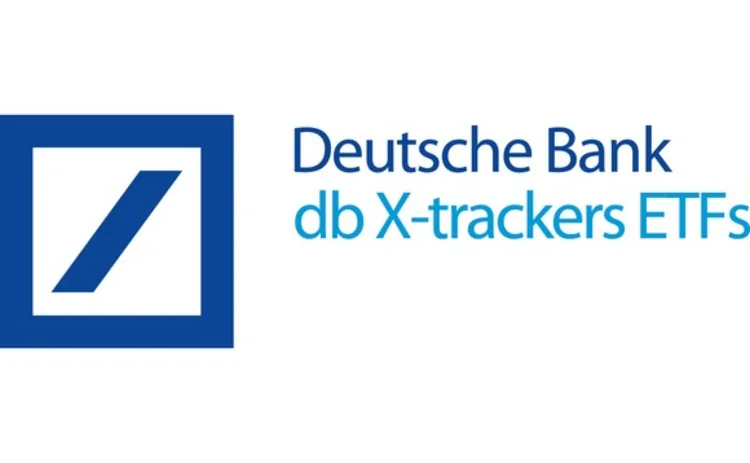
Sponsored survey: Deutsche Bank X-trackers ETFs


Exchange-traded funds (ETFs) are one of the fastest-growing segments of the asset management industry in Asia, with inflows into Asia-Pacific ETFs totalling $19.9 billion in 2011, up 84% on the previous year. Despite a turbulent equity market, ETF assets under management (AUM) in the region grew to $91 billion by the end of 2011 and have since passed the $100 billion mark. While relatively small compared to the US or European markets, the Asian ETF market is growing and ETFs are likely to become an increasingly utilised investment vehicle.
ETFs not only offer characteristics of an investment fund such as low management fees and exposure to a wide set of asset classes, but also characteristics more commonly associated with equities such as access to real-time pricing and intraday trading. ETFs also offer a high level of transparency, regulatory protection, liquidity and tax efficiency.
In Asia, Deutsche Bank is the number one ETF provider in Singapore and Hong Kong in terms of its product offering, with 47 ETFs listed on the Singapore Exchange and 30 on the Hong Kong Stock Exchange. Deutsche Bank has more than 200 db X-trackers ETFs listed on 10 stock exchanges globally, with more than $40 billion in AUM.
The second annual Asia Risk and Deutsche Bank Asian ETFs Survey determines how Asian institutional investors view ETFs and identifies investor trends so that distributors are able to better serve their clients.
There were two key themes to emerge from the survey in 2012 –
the tremendous growth potential for ETFs in Asia and the continuing focus on investor education by ETF providers.
Focus on education
Investor education in the structure of ETFs remains a key focus for distributors in Asia, with the survey finding that these efforts are beginning to pay off. In particular, there has been a decline in the number of Asian investors that are unaware that some ETF providers may use derivatives or securities lending in their products. This percentage fell from 11% in 2011 to 5.8% in 2012; a positive result due to the increased emphasis on investor education, says Marco Montanari, head of db X-trackers ETFs Asia at Deutsche Bank in Hong Kong. In addition, the percentage of investors that say this has been explained and are comfortable with ETFs using derivatives or securities lending increased from 54% to 57.2%. “You have an additional 5% of investors who now understand how ETFs are structured compared with last year,” says Montanari.
Tax disadvantage
When a US-listed ETF pays a dividend, there is generally a 30% tax imposed by US authorities, which mean Asian investors using US-listed ETFs may not receive the full benefit of investing in an ETF. In 2011, 25% of the overall respondents were unaware of this potential US tax disadvantage. This number has fallen to 20.3% this year. In addition, the percentage of investors that were aware of this issue and avoided US-listed ETFs rose from 28.5% in 2011 to 50.7% in 2012.
“The fact that more than 50% of the investors are concerned about the potential tax disadvantage on dividends of US ETFs is a clear indication that investors are getting more informed and more knowledgeable about their investments,” says Montanari.
Growth potential
The potential for growth in the Asian ETF market is highlighted by the fact that 84.3% of the investors expressed interest in buying more ETFs in the next 12 months, up from 65% in 2011. In addition, 45.1% of surveyed investors do not own ETF shares.
Of the 54.9% of investors that own ETFs, the majority of these (37.7%) invest less than 10% of their total assets into ETFs, once again highlighting the potential for growth.
Market estimates suggest around 95% of funds in Asia are actively managed funds, with ETFs only making up 5% of total AUM. This balance needs to be redressed, says Montanari.
“We see this as a huge opportunity for ETFs in Asia to increase their weight in institutional investor portfolios and to increase market share. I would not be surprised if ETFs grow to 20–30% of total AUM in Asia in the next few years,” he says.
Other positive trends illustrating that Asian ETF buyers are getting more familiar with how ETFs are structured include the fact that 65% of the respondents understand the role of the market-maker.
Current investor exposure
Asian investors mainly use ETFs for exposure to equities, in developed and emerging markets along with commodities. This year, 65% of respondents use ETFs for equity exposure in developed markets and another 57% for exposure to emerging market equity. However, there is still potential for other asset classes, including fixed income. In Asia, institutional investors mainly buy ETFs for equity exposure and are not aware that ETFs can be used to get exposure to fixed income, according to Montanari. “In Asia, the successful fixed-income funds are mostly bought by retail investors. Investors still need to be told that the advantages of investing in equity ETFs also apply to fixed-income ETFs.”
More than 64% of the investors surveyed were looking for emerging market equity ETFs, with interest also observed in both high-dividend themed and commodity ETFs – 50% of investors indicated they would consider these products in the next 12 months.
Room for improvement
Despite the improvements in investor education, Deutsche Bank believes further education is required in certain areas. For example, too many investors are still concerned with the closing price of an ETF and should instead be focusing on the net asset value (NAV). “NAV is the most accurate measurement that accounts for time-difference variations. Unfortunately, 78% of the survey respondents do not consider NAV but the ETF’s closing price when they make investment decisions regarding ETFs. Together with liquidity, reference to NAV will be one of the key topics we are going to highlight in our education effort going forward,” says Montanari.
While the percentage of investors that prefer ETFs with high historical volumes fell from 62% to 55.8% this year, this number is still too high, he says. “ETFs are funds and liquidity is not just represented by volumes on the exchange, but liquidity of the underlying market.”
Another area of improvement is educating the investor on the benefits of a Ucits-compliant fund. Only 44.4% of investors said they understood that Ucits regulations provided ETFs with a robust regulation framework to ensure the quality and structure of the ETF.
“The lack of information available to investors is disappointing given that the majority of funds distributed in Hong Kong and Singapore use the Ucits framework. More work needs to be done by providers in educating investors on the benefits of this framework,” says Montanari.
Challenges for ETFs in Asia
The challenges ahead for Asian ETFs are clear. Investors need further education on the structure of ETFs, potential tax disadvantages of investing in overseas-listed ETFs and on using NAV rather than closing price as a true measure of the value of an ETF.
Along with these topics, tracking error could be the next focus point for authorities, according to Montanari. “An ETF with low fees but high tracking error is not a good ETF. Regulators are starting to look into this and I would not be surprised if the regulators implement a rule where the tracking error of an ETF has to be below a certain percentage.”
The importance of tracking error to investors was also clearly highlighted as the most important issue for investors when choosing an ETF.
In the longer term, how China and India integrate into the ETF market will be key to the development of ETFs in Asia. However, they are still closed markets, meaning that providers need to sell their ETFs through a local asset manager.
“If these two countries decide to open up their ETF markets and sign agreements with other countries to allow distribution of ETFs into their local markets, then this will be a game-changer. However, I do not see this happening in the short term,” says Montanari.
View the full article with graphs in PDF format
Sponsored content
Copyright Infopro Digital Limited. All rights reserved.
You may share this content using our article tools. Printing this content is for the sole use of the Authorised User (named subscriber), as outlined in our terms and conditions - https://www.infopro-insight.com/terms-conditions/insight-subscriptions/
If you would like to purchase additional rights please email info@risk.net
Copyright Infopro Digital Limited. All rights reserved.
You may share this content using our article tools. Copying this content is for the sole use of the Authorised User (named subscriber), as outlined in our terms and conditions - https://www.infopro-insight.com/terms-conditions/insight-subscriptions/
If you would like to purchase additional rights please email info@risk.net